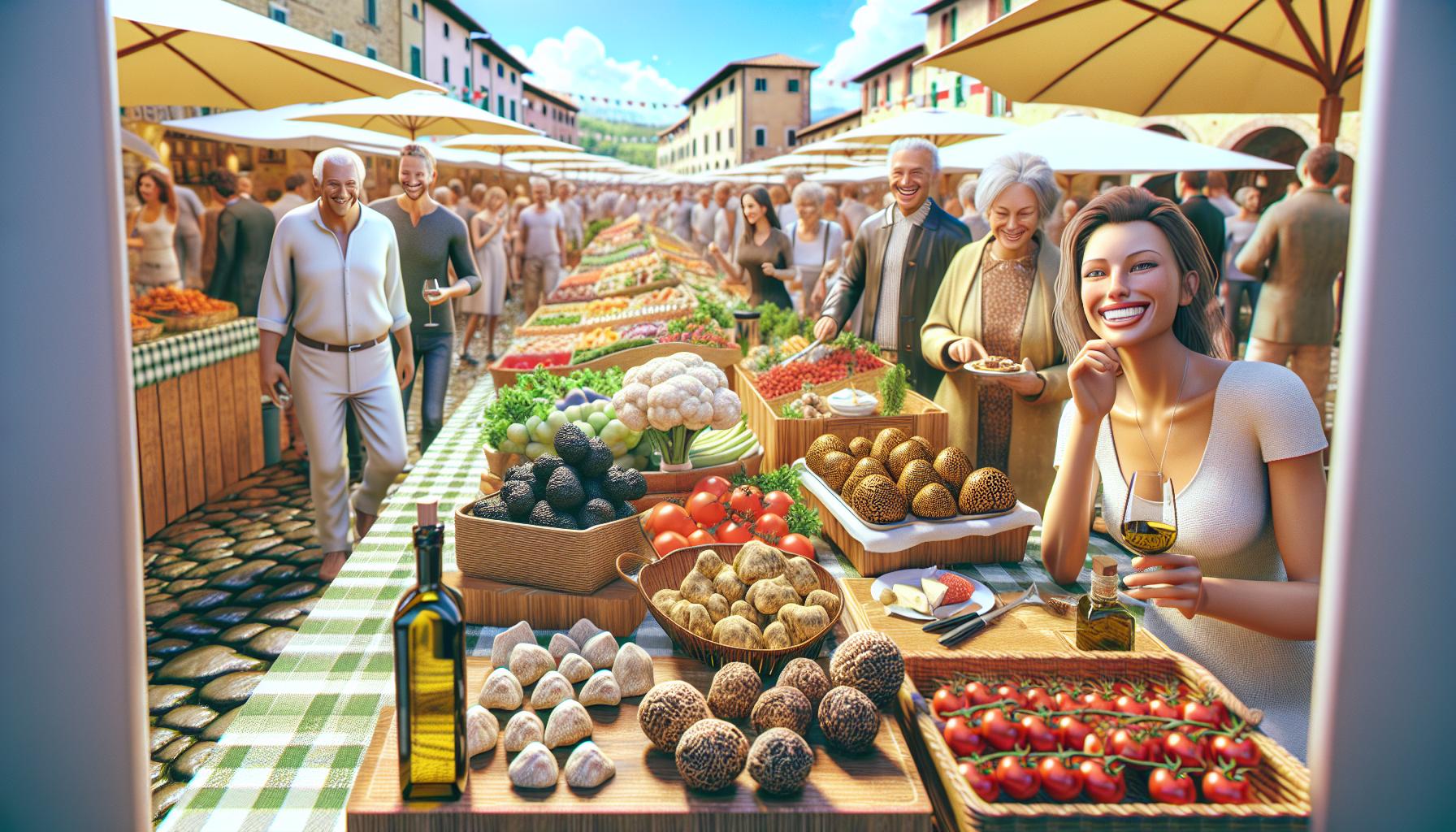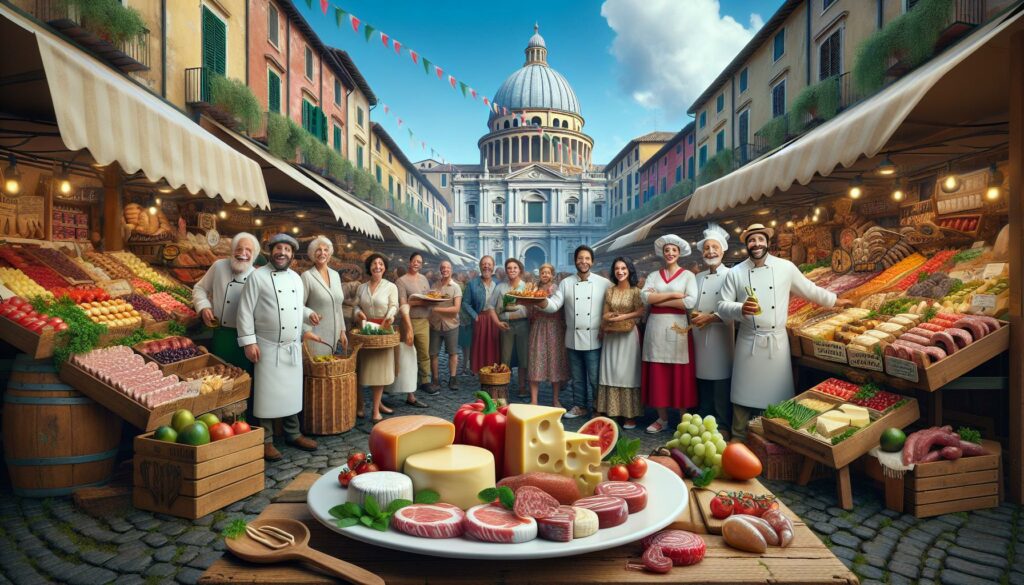Italian cuisine stands as a testament to centuries of culinary artistry, where every dish tells a story of tradition family and regional pride. From the sun-kissed tomatoes of Naples to the aromatic truffle fields of Tuscany food isn’t just sustenance in Italy – it’s a way of life that brings people together.
The Italian approach to dining transforms mere meals into celebrated occasions. Whether it’s a two-hour lunch break or a Sunday feast that stretches into the evening Italians embrace their food culture with unmatched passion. Each region boasts its own specialties cooking techniques and time-honored recipes passed down through generations like precious family heirlooms.
Italy Culture Food
Italian food culture centers on the sacred connection between cuisine and daily life. The traditions surrounding food preparation and consumption form the cornerstone of Italian social identity.
The Role of Family in Italian Dining
Family gatherings around the dining table represent the heart of Italian food culture. Italian families spend an average of 2.5 hours at the lunch table on weekends, making it the day’s central event. Three generations often participate in Sunday lunch preparations, with grandmothers teaching traditional recipes to younger family members. Meals follow a structured format of multiple courses: antipasto, primo, secondo with contorno, and dolce. Each family member contributes to mealtime traditions, from selecting fresh ingredients at local markets to preparing hand-rolled pasta. Children learn cooking techniques by participating in kitchen activities from an early age, ensuring the preservation of family recipes.
Regional Diversity in Italian Cuisine
Italy’s 20 regions showcase distinct culinary identities shaped by local geography and history. Northern regions like Lombardy feature rich risottos butter-based sauces while Sicily embraces Mediterranean ingredients like citrus olive oil seafood. Each region maintains signature dishes:
| Region | Signature Dishes |
|---|---|
| Emilia-Romagna | Parmigiano-Reggiano, Prosciutto di Parma, Tortellini |
| Tuscany | Ribollita, Bistecca alla Fiorentina, Pecorino |
| Sicily | Arancini, Pasta alla Norma, Cannoli |
| Campania | Pizza Napoletana, Mozzarella di Bufala, Limoncello |
Local ingredients determine cooking methods recipes flavors with coastal areas specializing in seafood mountain regions focusing on preserved meats cheeses.
Essential Components of Italian Meals

Italian meals follow a structured format with distinct courses and traditional components that enhance the dining experience. Each element serves a specific purpose in creating a complete culinary journey through flavors and textures.
Antipasti and Aperitivo Culture
The antipasti course opens Italian meals with small plates of cured meats, cheeses, marinated vegetables or seafood. Traditional antipasti includes Prosciutto di Parma, fresh mozzarella, bruschetta topped with tomatoes or olive tapenade. The aperitivo ritual precedes dinner between 7-9 PM when Italians gather at bars or cafes for light drinks and snacks. Popular aperitivo beverages include Aperol Spritz, Campari with soda or Prosecco accompanied by olives, nuts or small sandwiches. This pre-dinner custom stimulates the appetite while fostering social connections.
The Art of Pasta Making
Fresh pasta forms the cornerstone of Italian cuisine with over 350 distinct shapes each designed to complement specific sauces. Italian nonnas prepare pasta dough using semolina flour, eggs, olive oil and water kneaded to achieve the perfect elasticity. Regional variations showcase unique pasta types: orecchiette in Puglia, tortellini in Emilia-Romagna and trofie in Liguria. The texture of handmade pasta allows sauce to cling better compared to dried varieties. Proper pasta cooking requires salted water brought to a rolling boil with pasta cooked until al dente.
Wine and Food Pairing Customs
Italian wine culture integrates seamlessly with regional cuisine through established pairing traditions. Red wines from Chianti complement Tuscan meat dishes while crisp Verdicchio enhances seafood from Le Marche. Standard pairings include:
| Region | Wine | Traditional Pairing |
|---|---|---|
| Piedmont | Barolo | Truffle risotto |
| Veneto | Soave | Seafood pasta |
| Sicily | Marsala | Caponata |
Local restaurants serve house wines (vino della casa) specifically selected to match their menu offerings. Wine consumption follows the practice of starting with lighter wines before progressing to full-bodied varieties throughout the meal.
Traditional Italian Dining Etiquette

Italian dining customs reflect centuries-old traditions that emphasize respect for food and dining companions. These practices create structure around mealtimes and maintain social harmony during meals.
Meal Time Schedules
Italians follow distinct meal schedules that differ from other cultures. Breakfast (colazione) occurs between 7:00-9:00 AM, consisting of coffee and pastries. Lunch (pranzo) remains the main meal, served from 1:00-3:00 PM. A typical Italian dinner (cena) starts at 8:00 PM, extending until 10:00 PM. Restaurants operate on these schedules, with many closing between lunch and dinner service. Business hours align with these traditional mealtimes, as shops often close during the lunch period to allow workers time for proper meals.
Table Manners and Customs
Italian dining etiquette includes specific protocols that govern meal conduct. Guests wait for the host to say “buon appetito” before eating. Bread stays on the table, not on plates, and serves to fare la scarpetta (sop up sauce). Diners keep both hands visible on the table, not in laps. Wine glasses get filled two-thirds full, never to the brim. Pasta requires a fork only, no spoon, and cutting it signals poor manners. Coffee arrives after dessert, not during the meal. Mobile phones stay off the table, preserving the social nature of dining. Tipping follows a modest 10% standard at restaurants.
Popular Italian Food Festivals and Celebrations

Food festivals in Italy celebrate regional specialties through cultural events that attract locals and tourists throughout the year. These celebrations showcase Italy’s culinary heritage with tastings, demonstrations and traditional ceremonies.
Seasonal Food Events
Italy’s harvest calendar drives numerous regional food festivals. The Alba White Truffle Fair runs from October to December in Piedmont, featuring rare white truffle auctions and tasting events. Tuscany’s olive harvest brings the Festa dell’Olio in November, celebrating fresh-pressed olive oil with tastings at local mills. The Sagra del Pesce in Camogli each May honors the fishing tradition with a massive 28-foot diameter frying pan cooking fresh seafood for 30,000 visitors. September’s Festival dei Primi Piatti in Foligno spotlights pasta varieties from 25 Italian regions through cooking competitions and street food stalls.
Religious Feast Days
Religious celebrations in Italy intertwine with traditional foods and feasts. St. Joseph’s Day on March 19 features zeppole pastries filled with custard cream. Easter brings colomba dove-shaped bread and traditional lamb dishes to Italian tables. The Feast of the Seven Fishes on Christmas Eve includes multiple seafood courses following Catholic traditions. St. Martin’s Day celebrations in November showcase new wine tastings paired with roasted chestnuts. The Feast of Sant’Antonio Abate in January includes the blessing of animals and special breads shaped like farm animals.
Modern Italian Food Culture
Contemporary Italian cuisine maintains its traditional roots while embracing sustainable practices and innovative cooking techniques. The evolution of Italian food culture reflects a balance between preserving heritage and adapting to modern dietary preferences.
Farm-to-Table Movement
Italian farm-to-table practices emphasize local sourcing from small-scale producers within 100 kilometers of restaurants. The movement connects 65% of Italian restaurants directly with regional farmers through agricultural cooperatives. Restaurants display “km 0” labels to indicate locally sourced ingredients from nearby farms. Modern Italian chefs collaborate with 2,000+ certified organic farms across Italy to maintain ingredient authenticity. Markets like Milan’s Mercato Metropolitano showcase products from 40+ local producers, enabling direct consumer access to regional ingredients.
Preserving Cultural Food Heritage
Italian culinary institutions document 5,000+ traditional recipes through digital archives and cooking schools. The Italian Academy of Cuisine catalogs 300 regional variations of pasta dishes across 20 regions. Local food artisans teach traditional techniques to 10,000+ students annually through certified programs. Organizations like Slow Food Italy protect 200+ endangered food products through their Presidia project. Cultural centers in cities like Bologna Naples maintain recipe libraries containing 15,000+ documented family recipes. Culinary tourism programs connect visitors with 500+ local families who share authentic cooking methods.
Captivate Food Lovers Worldwide
Italian food culture stands as a testament to the country’s commitment to preserving its culinary heritage while embracing modern innovations. From regional specialties to time-honored dining traditions each aspect of Italian cuisine tells a story of family connection and cultural pride.
The devotion to quality ingredients seasonal cooking methods and shared meals continues to influence global gastronomy. As Italy moves forward its food culture remains deeply rooted in tradition while adapting to contemporary needs and sustainable practices.
This harmonious blend of old and new ensures that Italian cuisine will continue to captivate food lovers worldwide for generations to come.

